Content
The red or unringed oiler (Suillus collinitus) is an edible mushroom. It is valued for its taste and aroma. That is why mushroom pickers prefer this group of mushrooms. Moreover, collecting them is not difficult; they can be found in mixed forests.
What does a red oiler look like?
To fill your basket with tasty and healthy mushrooms, you need to be able to distinguish them. The fact is that not all fruiting bodies can be eaten. Among the oils, there are some that should be avoided. A description of the mushroom will be presented below.
Description of the cap
First of all, mushroom pickers pay attention to the cap. Its diameter ranges from 3.5-11 cm.In a young fruiting body, the cap is represented by a hemisphere. As it grows, it changes shape. It straightens and a bulge appears. Old mushrooms can be identified by straight caps, the edges of which are most often curved upward and the middle is depressed.
Along the entire circumference of the cap, young Suillus collinitus have a sticky skin that covers the lower part of the cap. At first it is red, and as it grows the color turns brown. When it rains, the upper part of the mushroom body is slippery, as if lubricated with oil. Hence the name.
The pulp of the young mushroom is dense, tender, then slightly loose, but the color of the lower part is always yellow. The structure is tubular over the entire surface. In these tubes the spores with which Suillus collinitus reproduces mature.
Description of the leg
The height of the leg of the red mushroom is 2-7 cm, its thickness is within 1-3 cm. It has the shape of a cylinder, non-hollow, located in the center. It widens slightly at the bottom. Brown dots are clearly visible on the yellowish surface. There are no rings on the legs.
Is the red oiler edible or not?
Suillus collinitus is one of the fruiting bodies that is highly sought after by gourmets. The caps and legs can be eaten. They taste sweetish. The aroma, although not bright, is truly mushroom. Edibility category – 2.
Where and how does the red oiler grow?
Suillus collinitus can be found in almost all mixed and coniferous forests of Russia. Feels great on soil substrates. In the north and in the middle zone it grows under coniferous trees. In the south - under pine and cypress trees.
In Russian forests, fruiting is long, wave-like, in 3 stages:
- The first boletus can be collected in the second half of June under the young growth of pine and spruce trees.An excellent reference point for starting mushroom hunting is pine flowering.
- The second stage of collection is the end of July, just at this time the linden trees in the forest begin to bloom.
- The third wave occurs in August-September, until the first severe frost.
Collecting boletus is not difficult, since it is a family mushroom; single mushrooms are rare. The legs are cut off with a sharp knife close to the ground. Large caps with curved edges and wormy boletus should not be collected.
Doubles of the red oiler and their differences
Oily redheads have doppelgängers. They need to be distinguished, since one of them is inedible.
Oiler grainy. It can be distinguished from Suillus collinitus by its whitish stem. The cap is dark brown and lacks dark fibers. White droplets are visible on the tubular pulp of young mushroom bodies.
Common oiler. This double differs from the red mushroom in the rings that remain after the destruction of the covering film. The hat is reddish-red.
Mediterranean oiler. Unlike its red counterpart, this fruiting body has a light brown cap. The pulp is bright yellow.
How to prepare red boletus
Suillus collinitus is suitable for human consumption. Butter is boiled, fried, pickled and salted. Mushroom soups and sauces are very tasty.
If Suillus collinitus is collected for drying, the skin does not need to be removed.
Conclusion
The red oiler rightfully takes pride of place among mushroom pickers. After all, you can prepare many delicious and healthy dishes from them. The main thing is to ensure that there are no inedible doubles in the basket during collection.
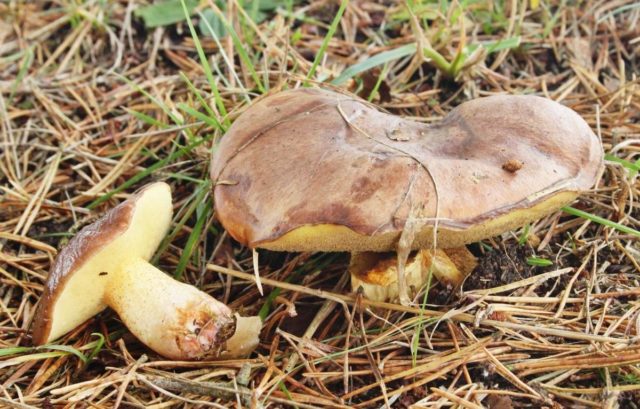
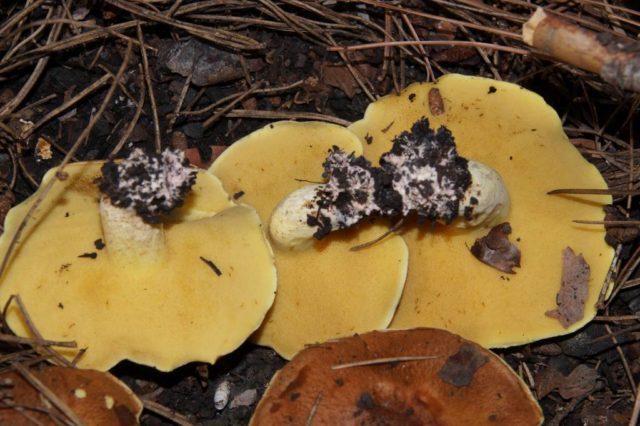
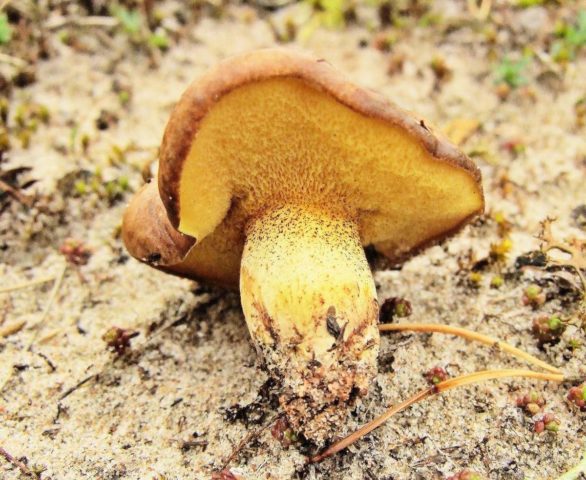
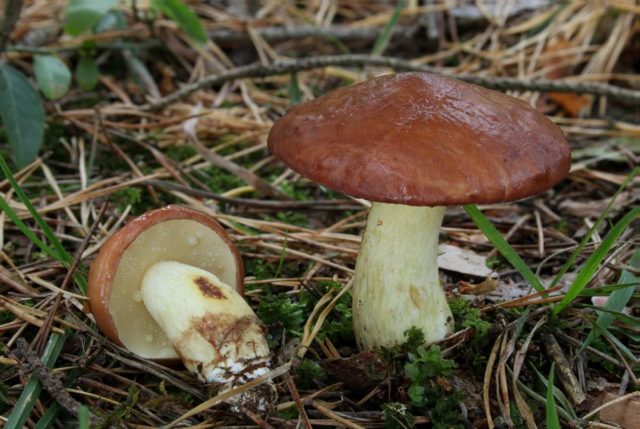
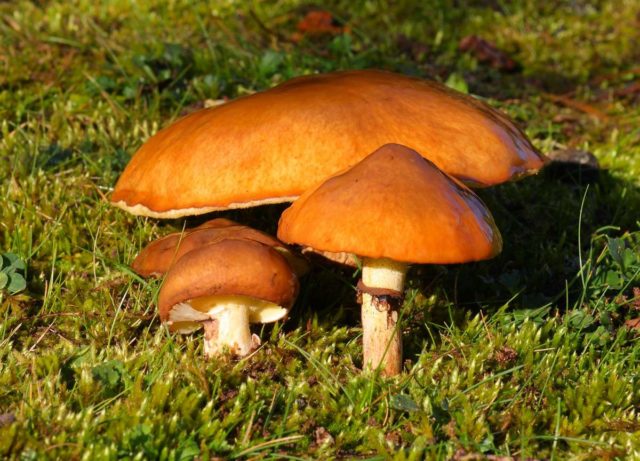
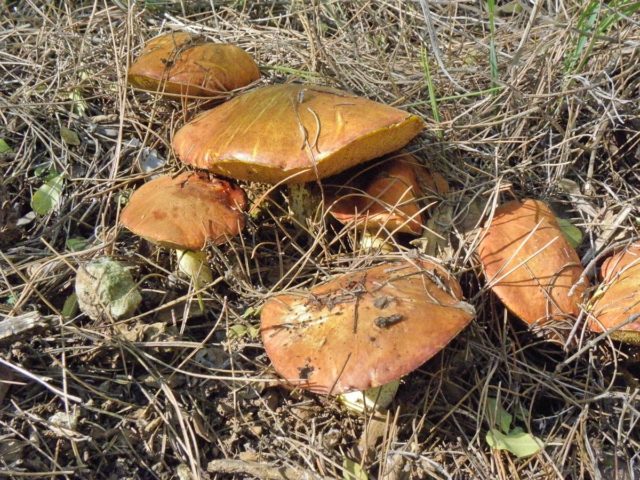
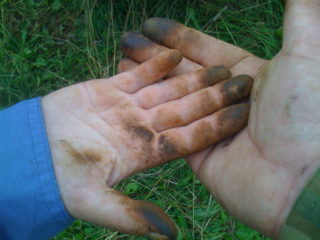
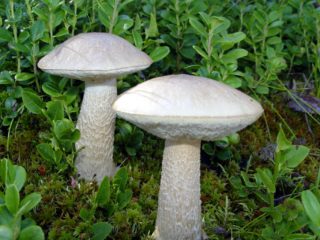
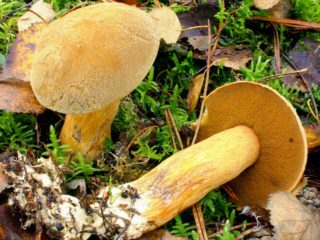
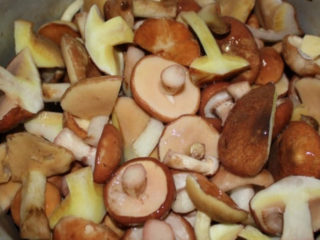

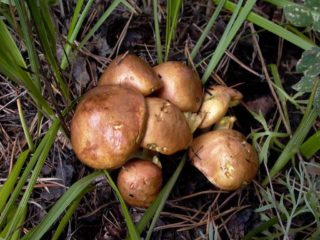
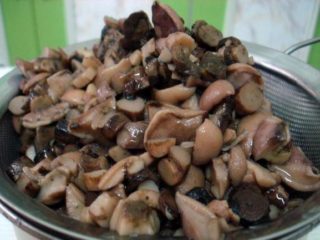
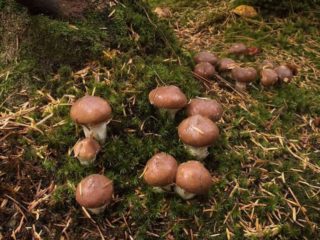

Is it possible to eat a sponge from a mushroom’s butter dish...it’s yellow at first, when you remove it the mushroom starts to turn green....